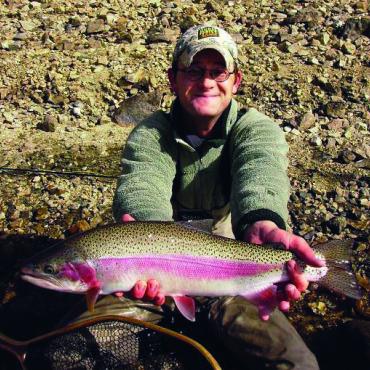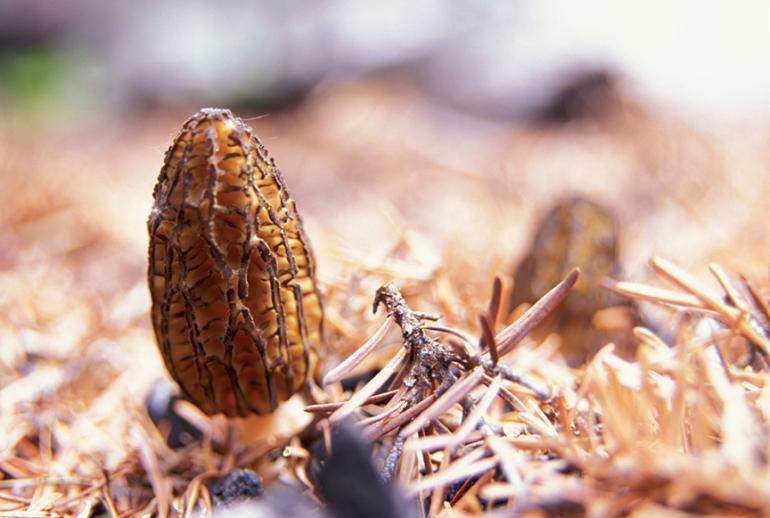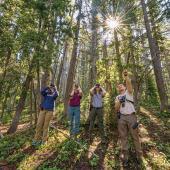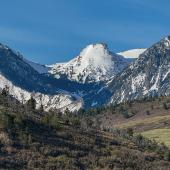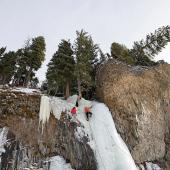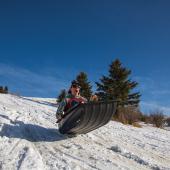Eyes to the Ground
'Shroom and shed hunting.
Spring hunting in the Northern Rockies is most often dedicated to two critters—wild turkey and black bear. But there are other goodies to hunt this time of year, and you don’t even need a tag for two of them: wild mushrooms and shed antlers.
Sheds
Mature male whitetail deer, mule deer, elk, and moose shed their antlers every year between late winter and very early spring. Shed antlers (or “sheds”), are commonly found wherever the hell they fell off, and, similar to socks lost in the dryer, a matched set is rare.
Where to look: Shed hunters guard prime locations like moonshiners guard stills, but sheds are most common in areas that see few humans and lots of game. Watering holes, mineral licks, migration routes, and areas of quality winter forage are all great locations to begin the search.
What to look for: Tracks of antlered critters are a great start to a successful shed hunt, but so are varmint tracks. Rich in calcium, selenium, and other nutritional elements, fresh sheds are often gnawed by rodents. Keep in mind that if one antler is found, the other may be close at hand.
Tips and tricks: Many dog breeds are naturals at finding shed antlers, so bring your mutt along for the hike. Always get permission from landowners well in advance of setting out. Several Wildlife Management Areas allow shed hunting, but many have set seasons.
When to go: Given animals' vulnerability during the winter (especially elk), it's best to wait until April or May to go shed hunting, to avoid further harassment of the wildlife.
‘Shrooms
Wild mushrooms are a tasty treat, but one must be absolutely certain of the type and species before picking for the table—many wild mushrooms are toxic. Eating—even handling—the wrong species can result in symptoms ranging from a mild rash to severe and painful swelling. Some mushroom species can even cause death. If you’re uncertain, leave it where you found it.
Where to look: Good starting points are areas that receive “dappled” sunlight, have adequate moisture, and enough decomposing organic matter to support growth. Two- to three-year-old burned areas, grazing rotations, clear-cut slag piles, and water seeps are all areas where mushrooms are found. In addition, don’t neglect the back yard or that funky weed bed that used to be a garden.
What to look for: Most folks have either seen Alice in Wonderland or played Super Mario Brothers, and should know what a mushroom looks like. From there, homework and research are required. There are numerous field guides and books detailing which types of wild mushrooms are edible in this area.
Tips and tricks: Keep your head down, and don’t avoid manure piles. If a little crap bothers you, you’d better stay away from halibut, crab, and lobster as well as mushrooms. As with any type of hunting, always get permission before venturing onto private land, and steer clear of heavily used areas.
What to do with them: Mushrooms are simple. All you need to pair them with a tasty venison steak is some butter, a cast-iron skillet, and a campfire. Some species can be flash frozen or dehydrated with good results, but nothing beats a fresh harvest.
Whether sheds or ‘shrooms are the target of your outing this spring, it pays to keep your eyes on the ground.

